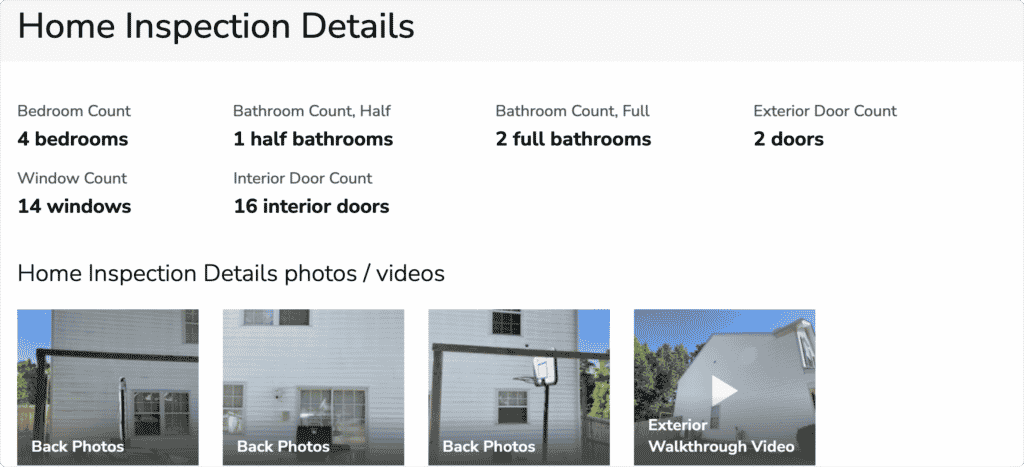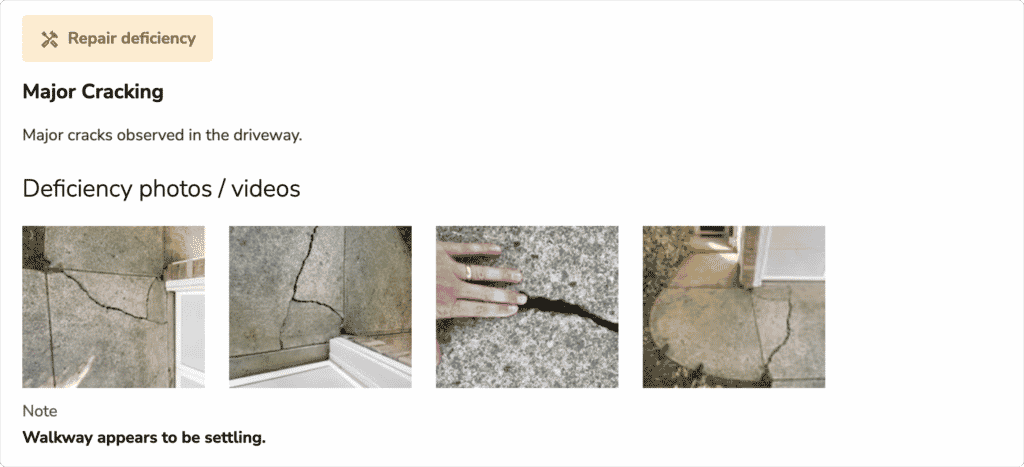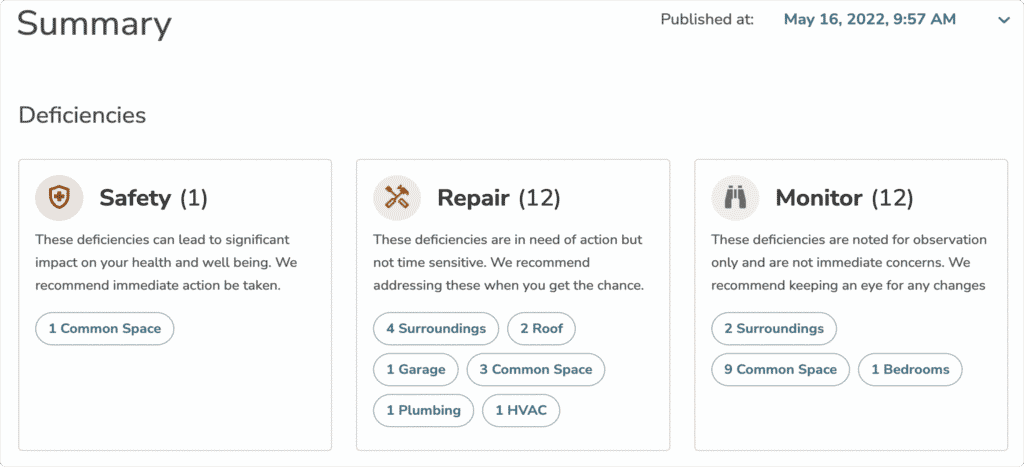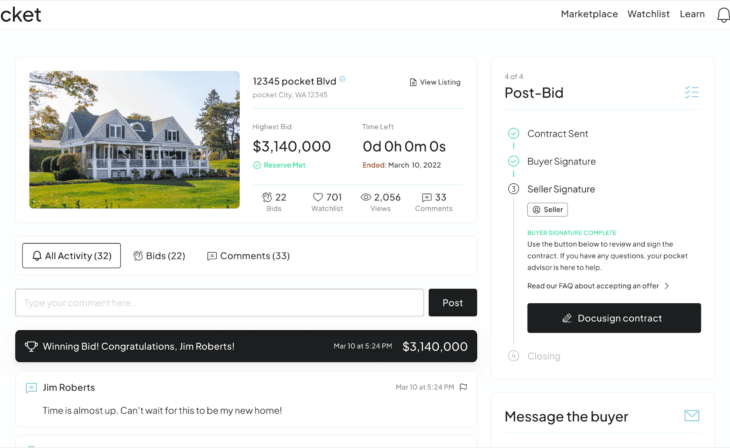First off, What Is a Home Inspection Report?
When buying or selling a home, a home inspection is generally (often dictated by whether or not there is an inspection contingency) part of the process. Inspections are always performed by a licensed home inspector with the purpose of determining the home’s condition.
After the inspection, a home inspection report is created that rates each component of the home and lists any issues in need of maintenance or repair. The report should also note the urgency of repair and the potential consequences of any issues that are discovered.
Whether you are a buyer or a seller, this report provides critical information about the home and could have a significant impact on your purchase or sale.
What Items Are Included in the Inspection Report?
While reports can vary to some extent, they will always include:
1. Basic Home Information
- Address and home type
- The year the home was built
- Home size
- People preset during the inspection
- Information about your State’s standards for home inspection
- Weather conditions during inspection
- Definitions of key terms
If there was a lack of access or unsafe conditions that limited the extent of the inspection, those will also be listed here.

2. Symbol or Code Key
To make the inspection report easier to read, you will find a symbol or code key that explains the ratings and rating system.
Most inspection report keys include the following codes:
- “I”: Inspected—an item that was inspected
- “NI”: Not inspected—an item that wasn’t inspected
- “NP”: Not present—an item that wasn’t present (usually because it wasn’t accessible)
- “S”: Safety concern—an item that is a safety concern
- “R”: General repair—an item requiring a repair
- “D”: Defect—a non-functioning item that needs a repair or alteration
3. Systems and Component Assessment
During the inspection, the inspector will focus on the condition of the home’s main systems (heating, AC, plumbing, and electrical) as well as the home’s major components (roof, attic, insulation, walls, ceilings, floors, windows, doors, foundation, and basement).
Each system and component will receive a rating, whether maintenance or repair is needed and any potential/future consequences of their current condition.

4. Photos of Issues
For any issue, defect, or damaged item found, there will be a photo taken and included in the inspection report. Thermal imaging may also be used to identify issues that are difficult to see, such as moisture, poor ventilation, or faulty electrical components.
5. Summary and Problem Ratings
Finally, your home inspection report will include a summary of the issues uncovered and a symbol or rating that indicates a general grade on your home’s condition.

What Items Are Not Included in the Inspection Report?
As discussed above, it’s important to note that there may be some components or areas not covered in the inspection report due to accessibility or safety concerns.
In addition, most home inspections do not focus on the following:
- Pests
- Septic system
- Mold
- Air quality
If you suspect that the home may have any issues not covered by your inspection, you should immediately contact a professional who specializes in those issues.
What Red Flags Should I Look For?
While some issues—such as faulty light switches or broken window seals—are minor and not causes for immediate concern, there are certain red flags to look out for when reading an inspection report.
These include :
Water Damage
If there are signs of water damage (stains on the ceiling, walls or floor) the home may have a history of poor plumbing, a leaky roof or be prone to flooding. Regardless of the cause, water damage can lead to serious structural and cosmetic issues as well as mold and other health concerns.
Mildew or Mold
If mold is a byproduct of short-term neglect, it is often a very minor issue and can be remedied with a decent cleaning. However, if mold has developed due to inadequate ventilation or excessive moisture over an extended period of time, it can become an extremely costly and potentially harmful problem.
Foundation Issues
A poor foundation can result in structural problems such as uneven flooring, drywall cracks, and crooked doors. If the inspection report finds issues with the foundation, it is likely the repairs needed will be extensive and expensive.
Termites
The presence of termites can be a serious issue. Termites have the potential to cause long-term damage to the home’s structure and foundation. If you find termite or termite damage, make sure to hire a pest control professional who specializes in termite removal as soon as possible.
Electrical
Electrical issues can be expensive to repair and incredibly dangerous if left uncorrected. If the inspection report lists any electrical problems or the presence of old or faulty wiring, it is important to fix these issues immediately.
Simple but Important!
Home inspection reports are fairly standardized so reading one should be easy. However, the issues listed in the report can vary wildly from home to home depending on the year it was built, location, upkeep and so on.
For that reason, make sure to carefully read through the inspection report and look for any red flags that could end up costing you serious time and money.




